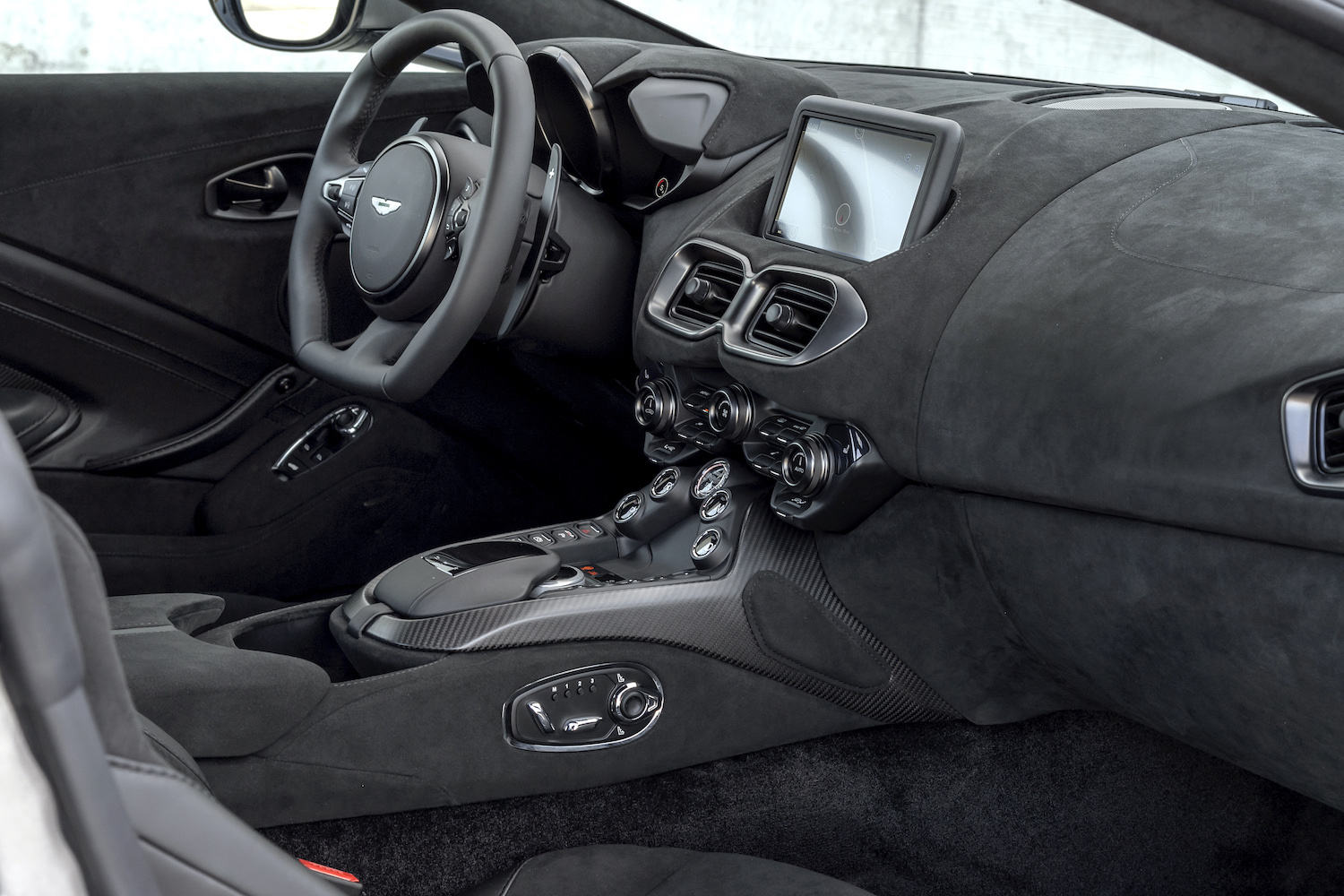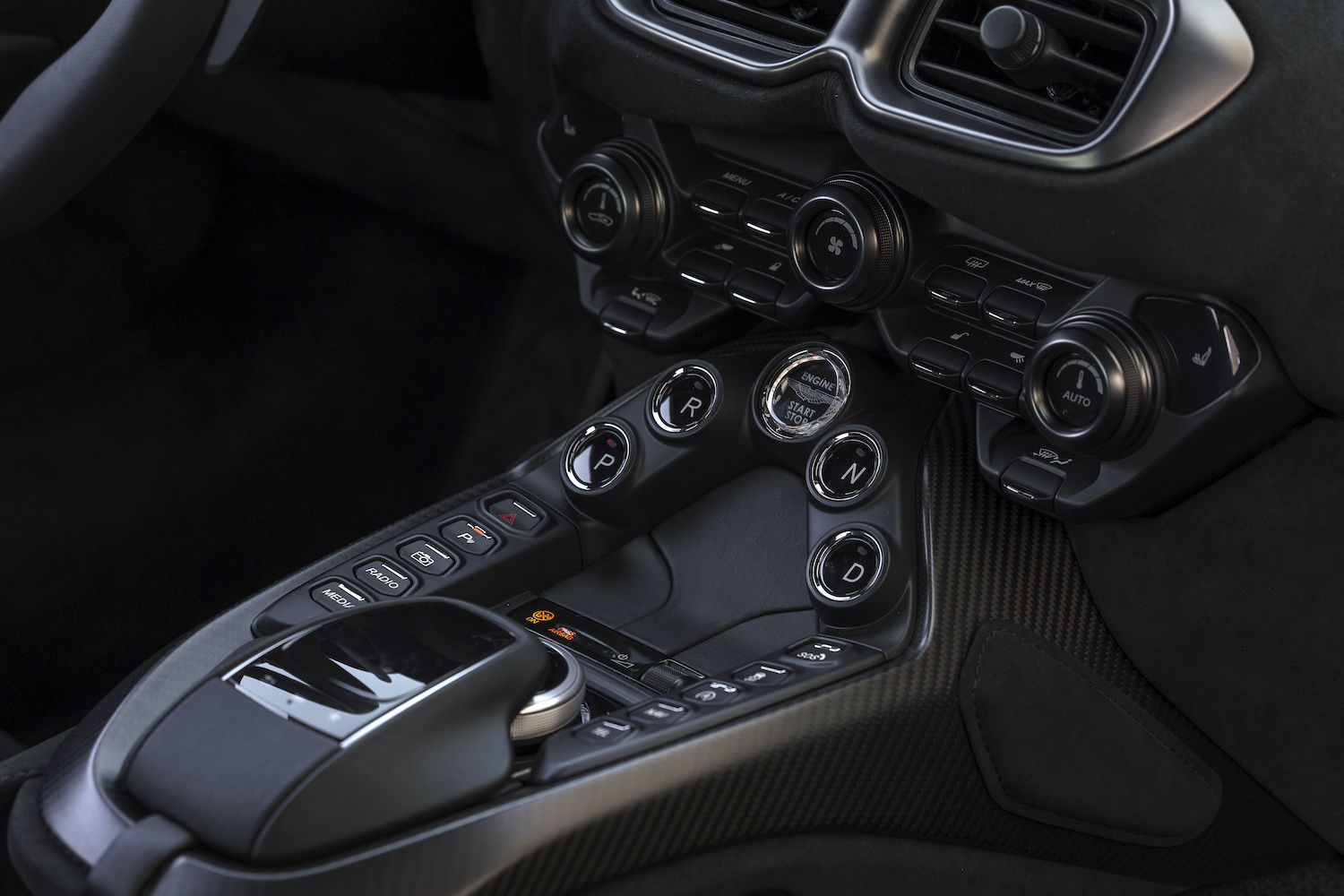Media | Articles
2020 Aston Martin Vantage review: Freethinkers welcome
In the Patek-wearing, Montblanc-writing world of high-end sports cars, a host of marques tussle for the chance to sweep the well-heeled into their dealerships and woo them with a trophy for closing the big deal, signing that major client, or opening their own private practice.
The Porsche 911 is the obvious choice in this space, and though it offers many flavors, it’s still the de facto uniform of early-career conspicuous consumption. Aston Martin would like to make a dent in this rear-engine hegemony with the Vantage, the newest, and most accessible way for buyers to tap into a sports car lineage that dates back to nearly the beginning of the internal combustion engine. No, it’s not a 911. It’s a properly sporting English GT car, and that’s exactly the point.
Sum of its parts
20191111222056)
The 2020 Aston Martin Vantage—now in its second year post-redesign—is an interesting example of the modern realities unavoidable for such low-volume luxury manufacturers. The Vantage borrows key aspects of its platform from the pricier DB11, important styling cues from the James Bond-only DB10 (a rushed-to-the-screen prototype that existed solely at the behest of Spectre director Sam Mendes), and a drivetrain and infotainment system supplied by Mercedes-AMG.
In short, it’s still a hand-made car in the vein of what the vaunted English shed has long produced, but with an assist from a reliable international partner and a boost from a bigger brother. Far from diluting the Aston Martin experience, the Vantage has managed to maintain the character that is so important when comparing one six-figure sports car to another.
Marketplace
Buy and sell classics with confidence
Cross-pollination
20191111222135)
This is Aston Martin’s most extroverted car by a fair margin, and the one that steps the farthest from the well-trodden path of past cars to wear Gaydon’s wings. That 007 connection has done wonders to combat the lack of recognition in the eyes of exotic spotters that was once a stumbling block for the British brand. There’s no longer any danger of mistaking the angular Vantage for a Jaguar, nor does it look anything like the mid-engine trio of the Audi R8, McLaren 570S or Lotus Evora GT which promise similar performance in the neighborhood of the Vantage’s $150k window sticker.
Still, there’s one important similarity to the Vantage’s direction competition that’s impossible to ignore, even if it may be hidden under a long, clamshell hood. Rather than source an in-house power plant, the car’s 4.0-liter, twin-turbo V-8 engine is deftly assembled by AMG across the channel and then airlifted between the coupe’s front fenders, where it produces 503 horsepower and 505 lb-ft of torque. Keeners will have no trouble identifying that engine as the same one motivating the Mercedes-AMG GT, perhaps the closest analogue to the Vantage in terms of price, performance, and mission statement.
It’s a charmer

Sharing the same beating heart as a market rival might at first seem it undercuts Aston Martin’s unique selling point—brand charisma. In truth, there are several mitigating factors that work to keep the Germans and Brits from treading all over each other’s football pitches.
The first is the limit imposed by AMG on the Vantage’s output, which crests nearly 75 ponies short of the Silver Star’s GT when found in its ultimate R trim. Consider this the cost of borrowing. Next up is the gearbox: Aston Martin offers both a ZF-developed eight-speed automatic and a seven-speed three-pedal manual (in the Vantage AMR), while Mercedes-AMG has deployed a seven-speed dual-clutch automatic in its model. These three transmissions couldn’t be more different in terms of how they affect the driving experience, with the torque converter-equipped Aston offering smoother shifts than the dual-clutch unit while sacrificing none of the quickness or control.
Finally there’s the Vantage’s distinct long-legged luxury feel. The car is so relaxing to drive yet also positively engaging that the idea of blasting across Europe or from New York to Chicago in a single trip seems entirely feasible. Its brawn never interferes with its sense of approachability, something missing from the visceral muscle of the AMG GT, and especially the GT R variant. While both cars are eminently at home on a race track, it’s holistic experience that elevates the Vantage. Credit here must go in part to the involvement of former Lotus chassis-tuning mastermind Matt Becker, who counts the Vantage as his first head-to-tail project with Aston.
Tooth and claw

Prime the console-mounted ignition button, however, and there’s no doubt the Vantage explodes with excitement. The coupe makes no secret of its potential for incurring envious fist shaking from the local constabulary. Consider that 3.6 seconds to 60 miles per hour (in the automatic model) is expected from anyone seeking out such a gleaming trophy of automotive compensation, and the car’s 195 mph top speed places it alongside pricier and somewhat less expensive (but rarely more comfortable) company.
Aston Martin has programmed several selectable suspension and throttle modes for the Vantage, accessible viable simple steering wheel controls. The lack of a Comfort mode on either knob addresses any questions about the car’s purpose, with Sport, Sport+, and Track handling the full range of the Vantage’s emotional spectrum. You can also dial in your own custom settings, so as to enjoy the most boisterous engine, exhaust, and transmission settings without subjecting the cabin to crystal-shattering vibrations from ultra-stiff dampers.


It was indeed this soft-underneath-but-hard-up-front ride and handling balance that proved to be the most rewarding through the lolling landscape of Texas hill country, just outside of Austin, Texas. Here, the Vantage peeled back the asphalt each and every time we stomped the throttle, but at the same time it served up a remarkably composed environment for a pair of riders intent on savoring the tailpipe symphony singing outback. The car’s surprising headroom (designed to accommodate helmet-wearing hot lappers) matches well with an overall sensation of space to stretch out and enjoy the landscape whizzing by.
When pushed, the Aston Martin effortlessly transforms its pussycat purr into the snarl of a much more lethal predator, surging forward under boost and changing direction with the kind of soft-pawed prowess that doomed many a lesser mammal to the tree-climbing forest cats of prehistory. Every dynamic movement is fluid and organic-feeling, without the clinical, laser-etched athletics of a Porsche 911 or Nissan GT-R.
You’ll notice, as well, no semi-autonomous accoutrements in the Vantage. Not even automatic cruise control can be found on the Aston’s equipment list. Whether you consider that to be a positive or a negative in such an expensive model will most likely be linked to whether you plan to order the car with a clutch pedal or not.
Dare to be different
20191111222032)
Driving the 2020 Aston Martin Vantage is an event, and although it may be matched by more affordable two-door muscle machines in terms of raw numbers and terminal velocities, few make a similar impact from either behind the wheel or when seen from the sidewalk as the sultry Brit. When the price of admission brushes up against $170,000 with options, as it did on several of the media test cars we experienced, a car of this caliber demands wow and flutter to go with flame and bang, and here the Vantage truly delivers.
More than that, the car also happens to offer a level of day-to-day dimensionality that is essential if Aston wants to lure customers from Porsche and Mercedes. There’s no penalty to packing the Vantage up for the weekend and hitting the road to wherever, nor is there regret involved on the morning commute the following Monday should you decide to press it into regular service. As an only car, it does the job. As a dream car, it proves there’s more to life under $200K than three familiar digits on the derrière.
20191111222041)
20191111222048)
20191111222105)
20191111222116)
20191111222127)
20191111222144)



